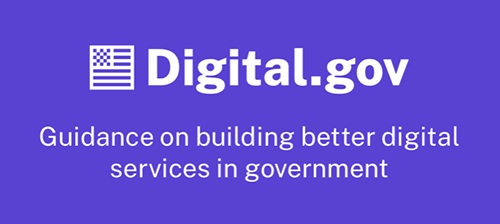
7/26/1990
President George H.W. Bush signed the Americans with Disabilities Act (ADA) into law. Modeled on the Civil Rights Act of 1964 and the Rehabilitation Act of 1973, the ADA is the most comprehensive disability rights legislation in history. Its employment provisions prohibit discrimination in job application procedures, hiring, advancement, termination, compensation, job training, and other terms, conditions, and privileges of employment.

Picture: President George H.W. Bush speaking at the signing of the Americans with Disabilities Act.
10/29/1992
Amendments to the Rehabilitation Act of 1973 emphasized employment as the primary goal of vocational rehabilitation. Specifically, they mandate presumptive employability, meaning applicants should be presumed to be employable unless proven otherwise. The amendments state that eligible individuals must be provided choice and increased control in determining vocational rehabilitation goals and objectives, determining services, service providers, and methods of service provision.

Picture: Job seeker meeting with an employment service provider. North Carolina Division of Vocational Rehabilitation.
2/8/1996
The Telecommunications Act, the first revision of telecommunications law since the 1930s, requires telecommunications manufacturers and service providers to ensure that equipment is designed, developed, and fabricated to be accessible to and usable by individuals with disabilities.

Picture: Testing adaptive equipment. U.S. Department of Labor.
8/20/1996
The Small Business Job Protection Act of 1996 created the Work Opportunity Tax Credit program, which provides a federal tax credit to companies that hire workers from populations that face high rates of unemployment, including people with certain disabilities.

Picture: A "Come In - We're Hiring" sign signaling a welcoming and inclusive workplace. Thinkstock Photos.
9/26/1996
The Mental Health Parity Act of 1996 requires group health plans and health insurance issuers to provide annual or lifetime dollar limits on mental health benefits on par with such limits on medical and surgical benefits. It applies to employers with more than 50 employees. In 2008, the Mental Health Parity and Addiction Equity Act expanded the law’s scope.

Picture: Alan heads a team of three. He is dyslexic.
3/18/1998
Through Executive Order 13078, President Bill Clinton established the Presidential Task Force on Employment of Adults with Disabilities. The Task Force was directed to evaluate existing federal programs to determine the changes, modifications, and innovations needed to remove barriers to employment faced by adults with disabilities. A few months later, U.S. Secretary of Labor Alexis Herman appointed Becky Ogle as its Executive Director.

Picture: Becky Ogle, Executive Director, Presidential Task Force on Employment of Adults with Disabilities (1998-2001).
8/7/1998
The Workforce Investment Act of 1998 (WIA) integrated various federal education, training, and employment services for job seekers and employers. The Act had a number of disability-related provisions, among them Section 188, which specifically prohibited discrimination based on disability related to participation in or employment with WIA-funded activities and services. WIA also reauthorized Rehabilitation Act programs through 2003 and linked them to state and local workforce development systems, and it expanded Section 508 of the Rehabilitation Act of 1973 to ensure that federal departments and agencies procure, use, and maintain accessible technology.

Picture: Employee using accessible technology. The Independence Center.
8/7/1998
Amendments to the Rehabilitation Act of 1973 created requirements for federal agencies to make their electronic and information technology accessible to people with disabilities. Under Section 508 of the Rehabilitation Act of 1973, as amended, agencies must provide members of the public, as well as employees with disabilities, access to information comparable to that afforded those without disabilities. Later, in 2017, the U.S. Access Board updated the standards for information and communication technology covered by Section 508, as well as the guidelines for telecommunications equipment under Section 255 of the Communications Act of 1934.

Picture: Section508.gov opening doors logo.
7/22/1999
The U.S. Supreme Court issued the landmark Olmstead v. L.C. decision. The Supreme Court ruled that segregation of people with disabilities when integrated, community-based settings are an option, is a form of discrimination under the Americans with Disabilities Act. Through this decision, the Court sent a message that long-term services and support for people with disabilities of all ages, including participation in community living or employment, must reflect what is appropriate for and desired by the individual.

Picture: Lois Curtis, holding sign, an artist and one of the two women with disabilities who filed the lawsuit that resulted in the 1999 U.S. Supreme Court Olmstead v L.C. decision. @I_am_Olmstead.
12/17/1999
Signed in 1999, the Ticket to Work and Work Incentives Improvement Act aimed to create a more secure financial and healthcare framework so that more Social Security Disability Insurance and Supplemental Security Income beneficiaries could move toward financial independence through work without fear of losing needed support.

Picture: Social Security Disability Claim document.
7/26/2000
To commemorate the 10th anniversary of the signing of the Americans with Disabilities Act, President Bill Clinton signed Executive Order 13163, "Increasing the Opportunity for Individuals With Disabilities To Be Employed in the Federal Government," directing agencies and departments to increase recruitment of people with disabilities and strengthen efforts to provide reasonable accommodations. A second directive signed the same day, Executive Order 13164, required departments and agencies to develop written procedures for processing reasonable accommodation requests.

Picture: Kenny Allen, a graphic designer with a Federal contractor to the U.S. Department of Transportation's (DOT) National Highway Traffic Safety Administration (NHTSA).
10/30/2000
The Developmental Disabilities Assistance and Bill of Rights Act of 2000 built upon legislation from earlier decades to improve services for people with developmental disabilities in a number of areas, including employment. Specifically, its employment-related provisions support people with developmental disabilities in pursuing paid work experiences in integrated, community-based settings and acknowledge the importance of technology in increasing such opportunities.

Picture: Kirsten Davidson, clerical assistant, Consumer Products Safety Commission.
2001
Following a 1999 recommendation from the Presidential Task Force on Employment of Adults with Disabilities, Congress established the Office of Disability Employment Policy (ODEP), a sub-cabinet level agency within the U.S. Department of Labor. This landmark occasion created, for the first time ever, a permanent entity to focus on disability within the context of federal labor policy.

Picture: ODEP's official logo.
2001
The Social Security Administration launched the Ticket to Work and Self-Sufficiency program as the centerpiece of the Ticket to Work and Work Incentives Improvement Act passed two years earlier. The voluntary program aims to increase the financial independence of Social Security Disability Insurance and Supplemental Security Income beneficiaries ages 18 – 64 by providing improved options for receiving employment services and maintaining publicly funded healthcare. In 2008, the regulations implementing the program were altered to revise the payment structure available to employment service providers participating in the program, called Employment Networks.

Picture: Two workers, one of whom is visually impaired and uses a cane, walking in an office. John Minchillo.
10/25/2004
The Assistive Technology Act of 2004, signed by President George W. Bush, amended a previous version of the Act to reflect developments in technology in all aspects of community life, including employment. The Act requires states to provide direct aid to people with disabilities to ensure they have access to the technology they need at home and at work and authorized the development of alternative financing mechanisms.

Picture: Man works from home with the aid of assistive technology. The Independence Center.
9/25/2008
The Americans with Disabilities Act Amendments Act of 2008 made important changes to the definition of the term “disability,” reversing previous U.S. Supreme Court decisions in favor of a broad and inclusive interpretation. These changes made it easier for a person seeking protection under the law to establish eligibility under it and required courts to focus more on assessing the extent of discriminatory practices than the technical definition of the term.

Picture: Signing of the Americans with Disabilities Act Amendments Act of 2008.
2/5/2009
The U.S. Department of Labor's Bureau of Labor Statistics added disability status to the monthly Current Population Survey, marking the first time that official government data on the employment status of people with disabilities was available.

Picture: A Bureau of Labor Statistics webpage illustrating data on the employment status of people with disabilities. Bureau of Labor Statistics.
9/18/2009
The Campaign for Disability Employment was launched. Funded by the U.S. Department of Labor’s Office of Disability Employment Policy, this multi-organization initiative uses positive messages and images to encourage employers and others to recognize the value and talent people with disabilities bring to America’s workplaces and economy. The centerpiece of the campaign is the “I Can” public service announcement, which receives significant airings on television and radio stations nationwide.

Picture: Michael Saulter, cast member of the CDE "I Can" public service announcement.
7/26/2010
On the 20th anniversary of the signing of the Americans with Disabilities Act, President Barack Obama signed Executive Order 13548, “Increasing Federal Employment of Individuals with Disabilities,” directing federal departments and agencies to increase the recruitment, hiring, and retention of people with disabilities.

Picture: Toolkit for Federal Agencies on Hiring People with Disabilities.
7/26/2010
In celebration of the 20th anniversary of the Americans with Disabilities Act, the U.S. Department of Labor inducted disability activists Justin W. Dart Jr. and Helen Keller into the Labor Hall of Honor.

Picture: Justin W. Dart Jr. with President Bill Clinton, left; Helen Keller, right.
9/15/2010
The U.S. Department of Justice published revised regulations for Titles II and III of the Americans with Disabilities Act (ADA). These regulations adopted enforceable accessibility standards called the 2010 ADA Standards for Accessible Design, which set minimum requirements (”both scoping and technical”) for newly designed and constructed or altered state and local government facilities, public accommodations and commercial facilities to be readily accessible to and usable by individuals with disabilities.

Picture: Graphic flowchart illustrating principles of universal design, which aims to make facilities, products, and services accessible to the widest range of people possible. National Association of Home Builders.
9/29/2010
The U.S. Department of Labor’s Office of Disability Employment Policy and Employment and Training Administration jointly funded and administered the first round of Disability Employment Initiative cooperative agreements, providing funds to nine states to improve education, training and employment opportunities and outcomes for youth and adults with disabilities who are unemployed or receiving Social Security disability benefits.

Picture: A graduate of East Peoria High School in Illinois who has a developmental disability participates in job training. Life Academy.
8/27/2013
The U.S. Department of Labor’s Office of Federal Contract Compliance Programs updated regulations implementing Section 503 of the Rehabilitation Act of 1973, which prohibits federal contractors and subcontractors from discriminating in employment against people with disabilities and requires them to take proactive steps to recruit, hire, promote, and retain people with disabilities. The updates strengthened the affirmative action provisions and conformed the regulations to the Americans with Disabilities Act Amendments Act.

Picture: OFCCP logo. Read the updated regulations.
7/22/2014
The 2014 Workforce Innovation and Opportunity Act (WIOA), which was the first update to the nation’s workforce development system since 1998, reauthorized and amended crucial programs to help job seekers access the services they need to succeed in employment and match employers with skilled workers. Section 188 of WIOA prohibits discrimination in the provision of services under the law as state vocational rehabilitation agencies, American Job Centers, and other service providers must ensure individuals with disabilities have equal opportunity to participate in services and receive appropriate accommodations. As added by WIOA, Section 511 of the Rehabilitation Act of 1973 ensures that individuals with disabilities have access to information and services that will enable them to achieve competitive integrated employment.

Picture: Brendan O’Neill, medical center clerk at Valley Medical Center in Renton, Washington.
12/19/2014
The Achieving a Better Life Experience (ABLE) Act improved financial stability and employment options for persons with disabilities by authorizing tax-advantaged savings accounts for youth and adults with disabilities. Assets in “ABLE” accounts can be used to cover any qualified disability-related expenses and are not counted when determining eligibility for federally funded means-tested benefits, including Supplemental Security Income and Medicaid. As a result, people with disabilities can save earnings from employment without jeopardizing eligibility for needed benefits.

Picture: People celebrating the availability of the ABLE Act.
1/5/2015
The U.S. Department of Labor announced the public members of the “Advisory Committee on Increasing Competitive Integrated Employment for Individuals with Disabilities” a key provision of the Workforce Innovation and Opportunity Act. Reflecting the movement toward an “Employment First” philosophy, this committee was charged with making recommendations to the Secretary of Labor on ways to increase opportunities for competitive integrated employment for individuals with disabilities. This includes recommendations on the use and oversight of section 14(c) of the Fair Labor Standards Act. The Committee issued its final report in September 2016.

Picture: Members of the Advisory Committee on Increasing Competitive Integrated Employment for Individuals with Disabilities pose with U.S. Labor Secretary Thomas Perez.
12/19/2016
The U.S. Department of Labor issued updated rules to ensure equal employment opportunity in Registered Apprenticeship Programs. Reflecting new approaches for increasing workplace inclusion and protecting against discrimination, the updates aim to help sponsors of apprenticeship programs reach a larger and more diverse pool of workers, including people with disabilities.
Picture: Instructor working with student in a woodshop.
1/3/2017
The U.S. Equal Employment Opportunity Commission issued a final rule amending the regulations implementing Section 501 of the Rehabilitation Act of 1973. The rule updated the responsibilities of federal agencies to take proactive steps to employ qualified individuals with disabilities and set representation goals of 12% for individuals with disabilities and 2% for individuals with specific, targeted disabilities. The updates also require the provision of personal assistance services to certain employees who need them because of a disability.

Picture: "Making the Move to Managing You Own Personal Assistance Services" toolkit from the U.S. Department of Labor's Office of Disability Employment Policy.
9/26/2018
The U.S. Department of Labor’s Office of Disability Employment Policy (ODEP), in collaboration with the Social Security Administration and the Employment and Training Administration, launched the Retaining Employment and Talent After Injury/Illness Network (RETAIN). Through RETAIN, ODEP awarded grants to eight state teams to implement and evaluate early intervention strategies designed to improve stay-at-work/return-to-work outcomes through improved coordination and communication between employers, healthcare professionals, employment-services professionals, and individuals facing an illness or injury that could prevent them from working.

Picture: RETAIN logo.
12/20/2018
The 21st Century Integrated Digital Experience Act (IDEA) was passed, requiring federal agencies to modernize their websites and digital services, according to eight specific criteria, including accessibility for people with disabilities. Federal agencies must already meet the accessibility standards of Section 508 of the Rehabilitation Act of 1973; however, IDEA emphasizes those requirements and sets a deadline for compliance. It also requires federal chief information officers to coordinate with other executives and ensure adequate funding and resources to execute its requirements.

Picture: Digital.gov website logo.
3/25/2019
For the first time, the U.S. Department of Labor’s Office of Federal Contract Compliance Programs’ Fiscal Year 2019 Corporate Scheduling Announcement List included focused reviews of covered federal contractors’ compliance with Section 503 of the Rehabilitation Act of 1973, per a directive issued the previous year. Section 503 prohibits federal contractors and subcontractors from discriminating in employment against people with disabilities and requires them to take proactive steps to recruit, hire, promote, and retain people with disabilities.

Picture: Federal contractors hold a meeting.
7/2/2019
The U.S. Department of Labor’s Office of Disability Employment Policy and Office of Federal Contract Compliance Programs announced the Excellence in Disability Inclusion (EDI) Award to recognize federal contractors that demonstrate excellence in including people with disabilities in their workforces, and highlight successful best practices for disability inclusion. In March 2020, the inaugural awardees, CVS Health and PepsiCo, were announced.

Picture: Excellence in Disability Inclusion Award logo.